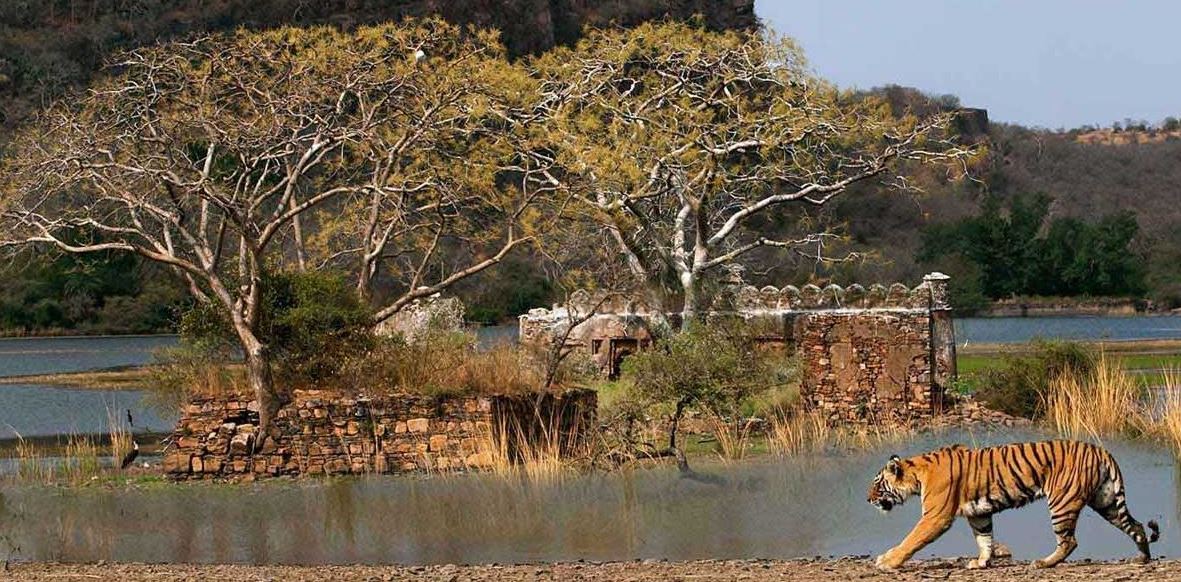Ranthambore National Park, situated in the Sawai Madhopur district of Rajasthan, is considered one of India’s most renowned wildlife reserves. Known for its majestic Bengal tigers and a beautiful forested landscape dotted with lakes, ruins, and rich biodiversity, Ranthambore has long been a favourite among wildlife lovers, photographers, and nature enthusiasts. While most people prefer visiting during the dry winter and summer months, the monsoon season adds a different charm to the park. The forest transforms into a lush green paradise, the air smells fresh with wet earth, and the atmosphere feels calm and untouched. The experience of witnessing wildlife in the rain – amid misty trees and overcast skies – is truly magical. If you’re looking for something unique and offbeat, the monsoon wildlife experience in Ranthambore can be a refreshing alternative to the regular safari.
Is Ranthambore National Park Open During Monsoon?
The official monsoon season in Ranthambore spans from July to September. During this time, the national park remains partially closed to protect the forest and wildlife from disturbance. Heavy rainfall can damage safari tracks and increase the risk of landslides or slippery conditions, which is why many core zones are shut down. However, the good news is that some zones remain open during the monsoon. This allows visitors to still enjoy a jungle safari experience, though with certain limitations. These accessible zones are carefully selected as they lie in the buffer area, which is relatively safer and less prone to heavy weather-related disruptions. Before planning your trip, always check the real-time status of safari availability through Ranthambore online booking platforms to ensure you’re choosing from the operational zones.
Zones 6-10 remain open in the monsoon season to continue with the safari activities. Wildlife sightings in these zones may not be as frequent as in the core areas (Zones 1-5), but you can still spot several animals, birds, and reptiles enjoying the monsoon freshness.
Pros and Cons of Visiting Ranthambore in Monsoon
Like any travel experience, visiting Ranthambore in the monsoon has its own set of advantages and challenges.
Pros:
• Fewer tourists – enjoy a peaceful and crowd-free safari
• Lush landscapes – the greenery is at its best
• Lower costs – hotels and safaris are often cheaper in the off-season
• Ideal for birdwatchers and photographers
Cons:
• Unpredictable weather – heavy rains can cancel safaris at the last minute
• Limited zones – core areas are off-limits
• Reduced tiger sightings
Monsoon safaris are best suited for tourists who are looking for a more laid-back and scenic experience, rather than guaranteed wildlife encounters. It’s perfect for photographers, birders, or anyone who enjoys nature at its most raw and rejuvenated.
Essential Travel Tips for a Monsoon Safari
To make the most of your monsoon safari, it’s important to prepare well. Here are some key travel tips:
• Carry lightweight raincoats, umbrellas and waterproof footwear, insect repellents, and quick-dry clothes. Avoid heavy luggage and pack waterproof covers for electronics like cameras and phones.
• Follow all park rules and instructions from guides. Roads may be slippery, so let the jeeps drive slowly and steadily. Never step out of the vehicle unless permitted.
• Always book through reliable sources that offer real-time updates and cancellation options. Weather can change fast, so keep your itinerary flexible in case of unexpected zone closures.
